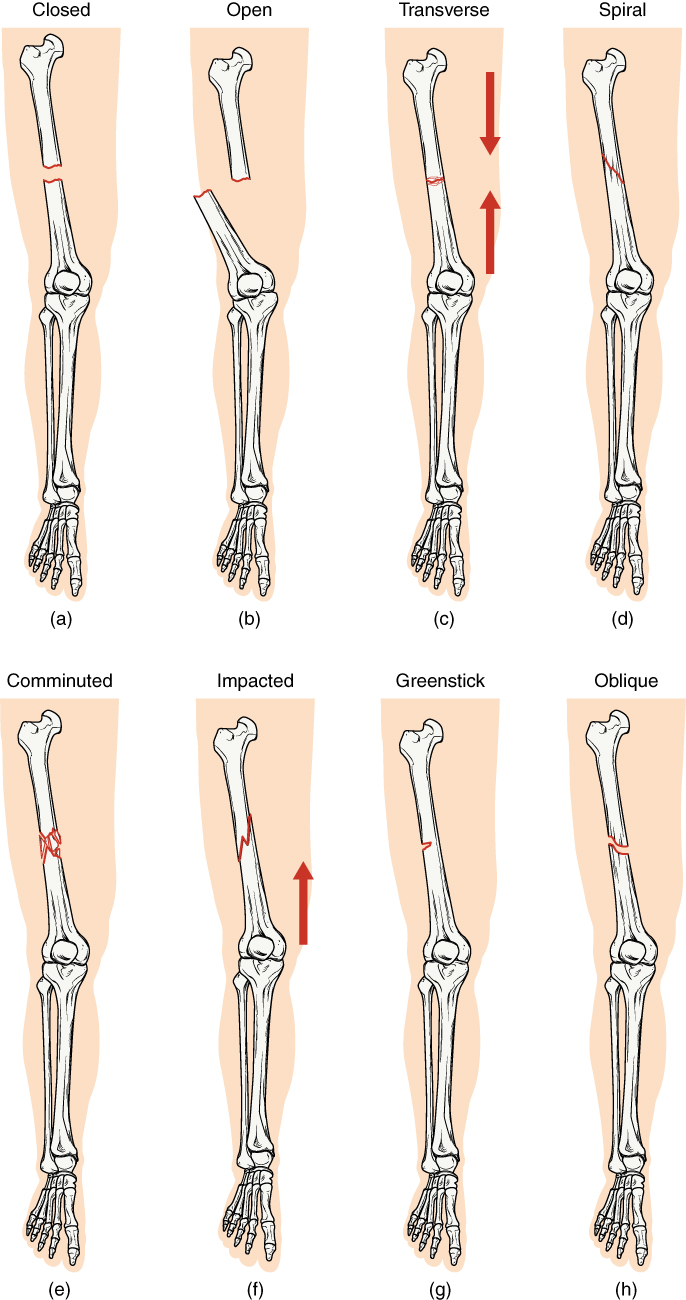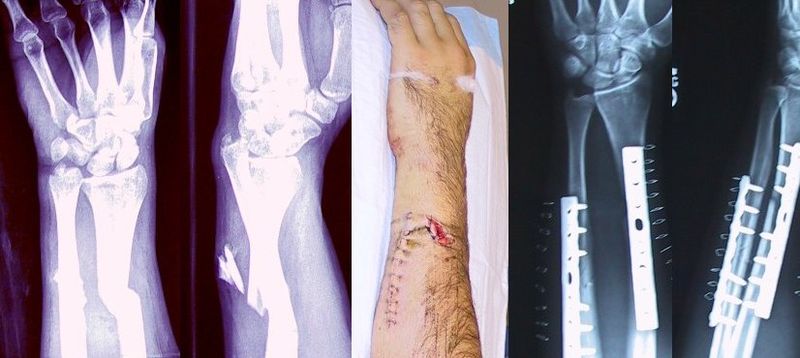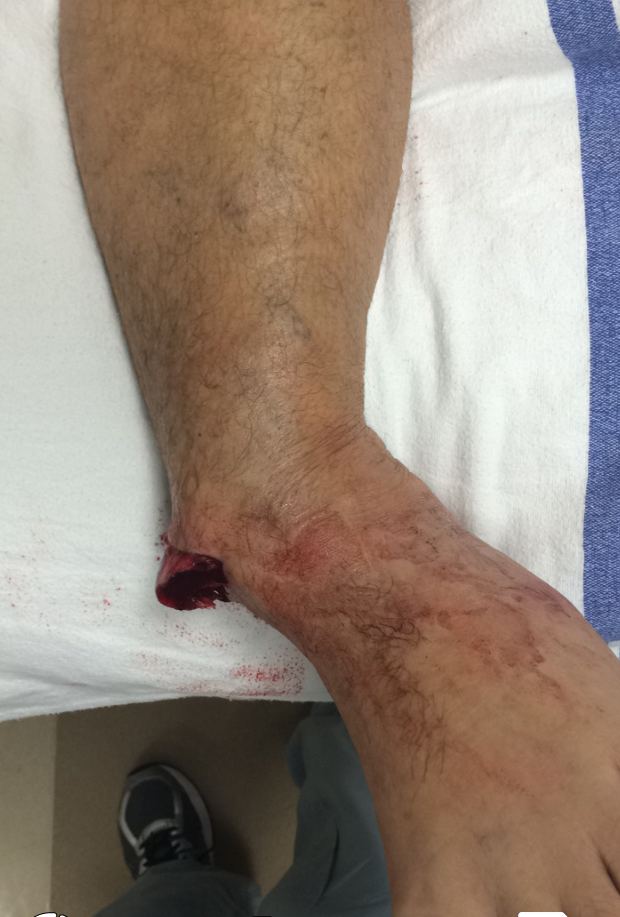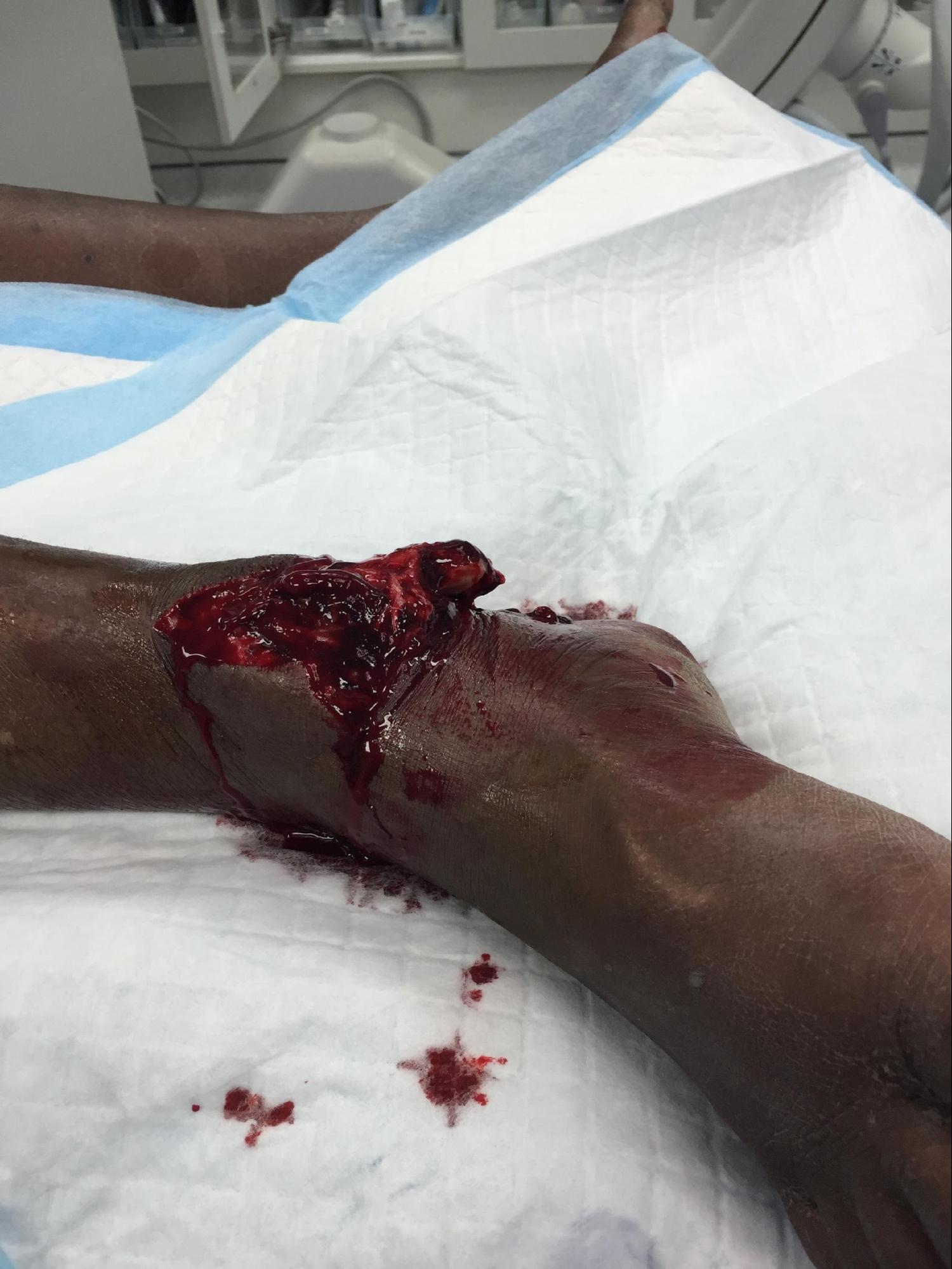[1]
Morris R, Jones NC, Pallister I. The use of personalised patient information leaflets to improve patients' perceived understanding following open fractures. European journal of orthopaedic surgery & traumatology : orthopedie traumatologie. 2019 Apr:29(3):537-543. doi: 10.1007/s00590-018-2332-6. Epub 2018 Oct 27
[PubMed PMID: 30368617]
Level 3 (low-level) evidence
[2]
Mebert RV, Klukowska-Roetzler J, Ziegenhorn S, Exadaktylos AK. Push scooter-related injuries in adults: an underestimated threat? Two decades analysed by an emergency department in the capital of Switzerland. BMJ open sport & exercise medicine. 2018:4(1):e000428. doi: 10.1136/bmjsem-2018-000428. Epub 2018 Oct 16
[PubMed PMID: 30364432]
[3]
Simpson AHRW, Tsang STJ. Non-union after plate fixation. Injury. 2018 Jun:49 Suppl 1():S78-S82. doi: 10.1016/S0020-1383(18)30309-7. Epub
[PubMed PMID: 29929699]
[4]
Haeberle HS, Navarro SM, Power EJ, Schickendantz MS, Farrow LD, Ramkumar PN. Prevalence and Epidemiology of Injuries Among Elite Cyclists in the Tour de France. Orthopaedic journal of sports medicine. 2018 Sep:6(9):2325967118793392. doi: 10.1177/2325967118793392. Epub 2018 Sep 4
[PubMed PMID: 30202769]
[5]
Weber CD, Hildebrand F, Kobbe P, Lefering R, Sellei RM, Pape HC, TraumaRegister DGU. Epidemiology of open tibia fractures in a population-based database: update on current risk factors and clinical implications. European journal of trauma and emergency surgery : official publication of the European Trauma Society. 2019 Jun:45(3):445-453. doi: 10.1007/s00068-018-0916-9. Epub 2018 Feb 2
[PubMed PMID: 29396757]
[6]
Lovalekar M, Abt JP, Sell TC, Lephart SM, Pletcher E, Beals K. Accuracy of recall of musculoskeletal injuries in elite military personnel: a cross-sectional study. BMJ open. 2017 Dec 14:7(12):e017434. doi: 10.1136/bmjopen-2017-017434. Epub 2017 Dec 14
[PubMed PMID: 29247087]
Level 2 (mid-level) evidence
[7]
Santos AL, Nitta CT, Boni G, Sanchez GT, Tamaoki MJS, Reis FBD. EVALUATION AND COMPARISON OF OPEN AND CLOSED TIBIA SHAFT FRACTURES IN A QUATERNARY REFERENCE CENTER. Acta ortopedica brasileira. 2018 May-Jun:26(3):194-197. doi: 10.1590/1413-785220182603184073. Epub
[PubMed PMID: 30038546]
[8]
Oliveira RV, Cruz LP, Matos MA. Comparative accuracy assessment of the Gustilo and Tscherne classification systems as predictors of infection in open fractures. Revista brasileira de ortopedia. 2018 May-Jun:53(3):314-318. doi: 10.1016/j.rboe.2018.03.005. Epub 2018 Apr 4
[PubMed PMID: 29892582]
Level 2 (mid-level) evidence
[9]
M'Bra KI, Kouassi AAN, Sery BJLN, Yao LB, Kouassi KJE, Ochou PG Jr, Asséré YAGRA, Lohourou GF, Krah KL, Kodo M. [Secondary amputation of the limb after primary surgery of open fractures of the lower limb]. The Pan African medical journal. 2018:29():172. doi: 10.11604/pamj.2018.29.172.13177. Epub 2018 Mar 26
[PubMed PMID: 30050636]
[10]
Noblet TM, Jackson PC, Foster P, Taylor DM, Harwood PJ, Wiper JD. Managing soft tissues in severe lower limb trauma in an ageing population. Injury. 2018 Jun:49(6):1197-1202. doi: 10.1016/j.injury.2018.03.010. Epub 2018 Mar 13
[PubMed PMID: 29588023]
[11]
Conaty O, Gaughan L, Downey C, Carolan N, Brophy MJ, Kavanagh R, McNamara DAA, Smyth E, Burns K, Fitzpatrick F. An interdisciplinary approach to improve surgical antimicrobial prophylaxis. International journal of health care quality assurance. 2018 Mar 12:31(2):162-172. doi: 10.1108/IJHCQA-05-2017-0078. Epub
[PubMed PMID: 29504869]
Level 2 (mid-level) evidence
[12]
Miller R. A Multidisciplinary Approach to Treating Traumatic Pelvic Fractures: 1.1 www.aornjournal.org/content/cme. AORN journal. 2018 Jul:108(1):13-22. doi: 10.1002/aorn.12272. Epub
[PubMed PMID: 29953606]
[13]
Elniel AR, Giannoudis PV. Open fractures of the lower extremity: Current management and clinical outcomes. EFORT open reviews. 2018 May:3(5):316-325. doi: 10.1302/2058-5241.3.170072. Epub 2018 May 21
[PubMed PMID: 29951271]
Level 2 (mid-level) evidence




